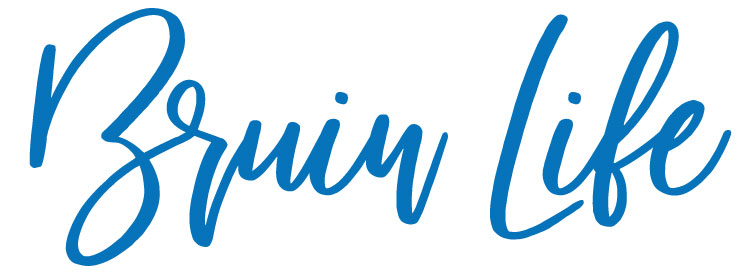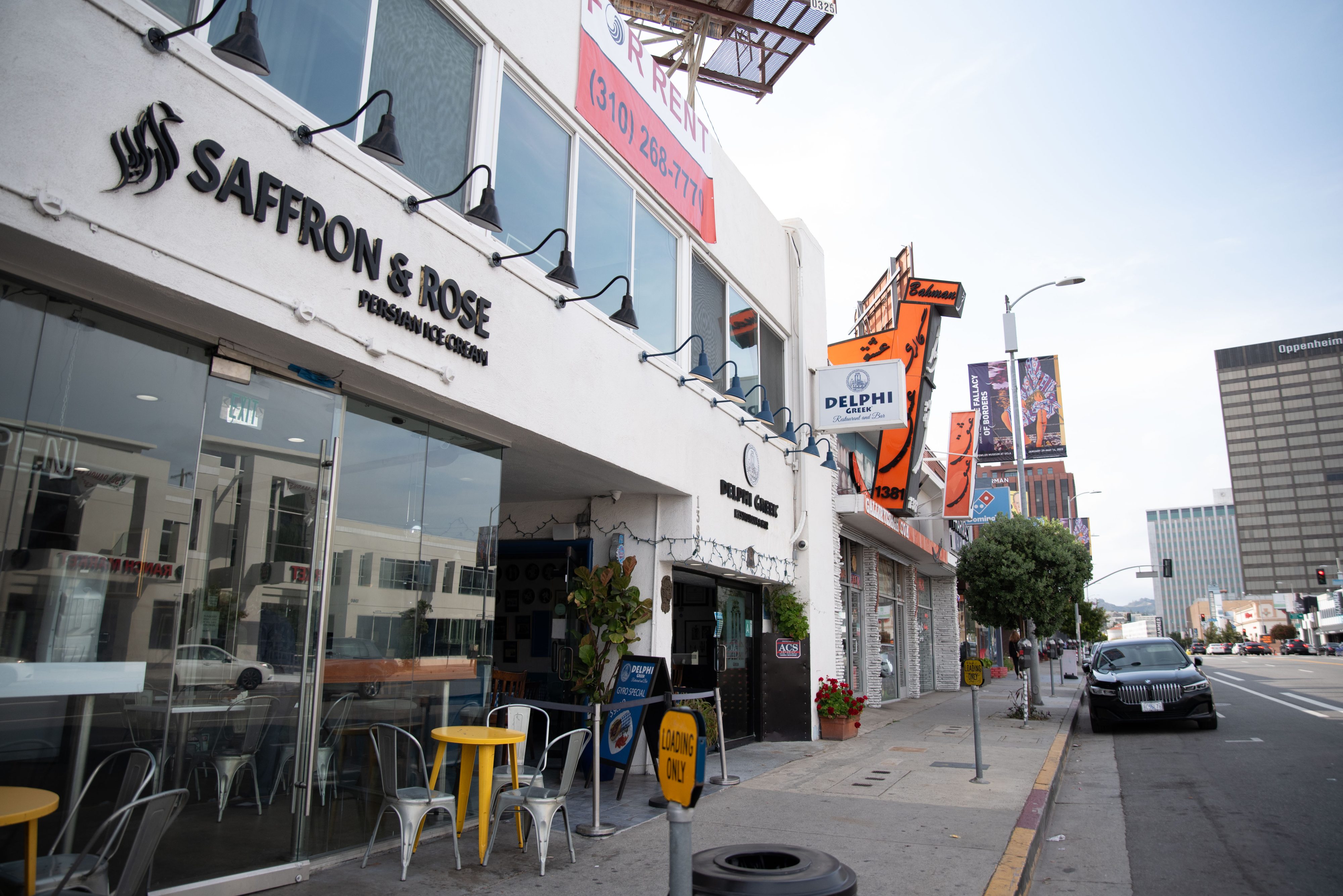Walking down Westwood Boulevard, one may find that it’s impossible to miss the plethora of Persian businesses lined up and down the block. Storefronts are marked with signs in both English and Farsi — a symbol of the blending of American and Persian culture — and the smell of fresh kabobs permeates the air. Many Persian residents refer to the area by its moniker of “Tehrangeles,” a portmanteau of Iran’s capital, Tehran, and Los Angeles.
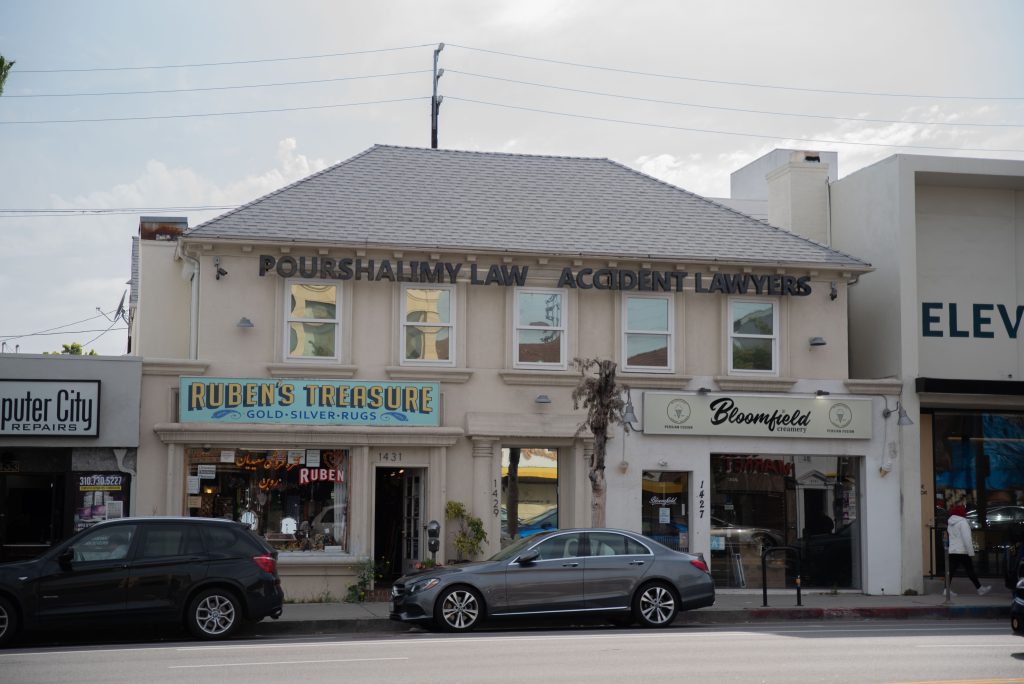
Located at the intersection of Westwood and Wilkins, the stores of the Persian Square offer plenty. Their goods range from the gastronomic to the antique. Photographed by Akshansh Khrodia/BruinLife.
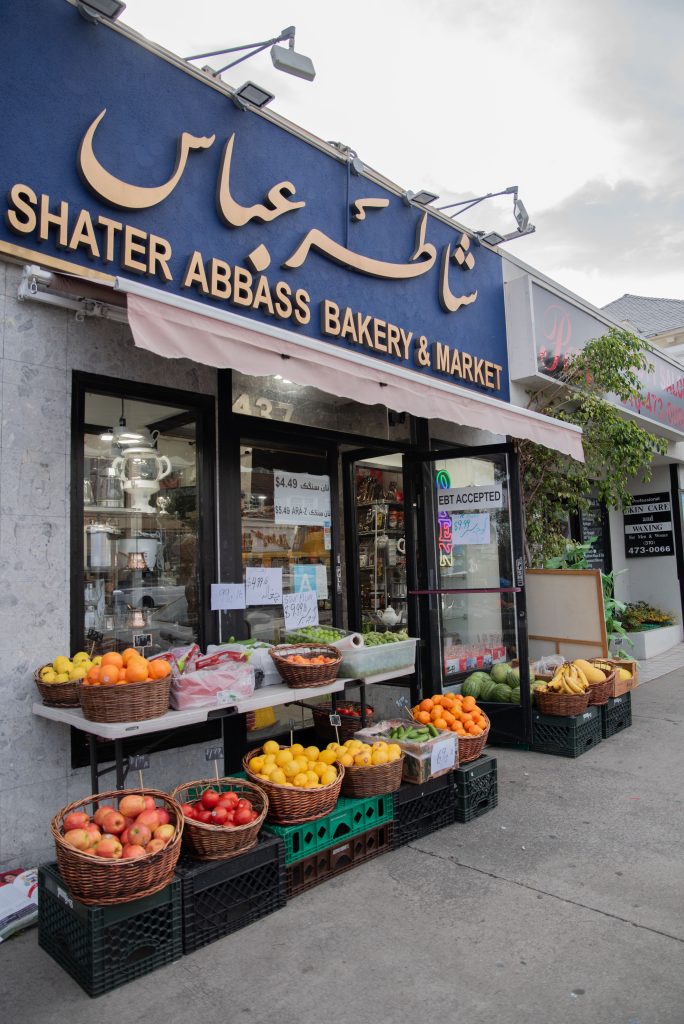
Shater Abbass, a grocery store and a bakery, sits on Westwood Blvd. The store offers an extensive supply of Iranian goods. Photographed by Akshansh Khrodia/BruinLife.
Los Angeles houses the largest community of Iranians outside Iran, but how did Westwood come to be so saturated with this ethnic group?
The Persian community’s strong ethnic presence in Westwood can be attributed to the Iranian Revolution of 1979, during which Shah Mohammad Reza Pahlavi was overthrown by Ayatollah Ruhollah Khomeini, and the Islamic Republic was officially established in place of the ruling monarchy. The new harsh religious regime caused a mass exodus of Iranian citizens, many of whom decided to settle in Southern California. With sunny weather, job opportunities and traffic that rivals Tehran’s own, Los Angeles provided displaced Iranian citizens a chance to start anew. Many flocked to Westwood due to affordable housing and the small but growing Persian presence that acted as a support network for new immigrants.
As more Persians arrived and opened their own stores and businesses, Westwood became the backdrop for a success story; individuals fleeing the only home they ever knew were able to rebuild their lives from the ground up, and the diversity of the community is now enhanced by both Persians and non-Persians of all generations. This thriving district is one of the only places outside of Iran where you can find such an abundance of Persian culture; this can be seen in their bookstores, grocery shops, restaurants and bakeries.
The enclave was recognized in 2010 when Los Angeles City Councilmember Paul Koretz officially named the intersection of Westwood Boulevard and Wilkerson Avenue “Persian Square.” While the spot itself marks where the first Persian business in Los Angeles was opened, for many Iranians, the recognition also acknowledges the rich culture they’ve brought to Westwood.
Persian Square mimics the familiarity of old Iran, and the area proves to be equally impactful to immigrants as it is to students. For Ariel Dardashti, a fourth-year student double majoring in global studies and sociology, the Persian aspect of Westwood offers a cultural outlet that keeps him connected to his heritage, which was an important factor he considered when deciding where to attend college. Dardashti explained that attending a university by Persian Square has fundamentally changed his college experience for the better. Not only does he have access to unique programs like a Persian art class in Westwood, but there are more opportunities for him to connect with his roots on campus, such as through the Persian Community at Hillel, or PCH, and the Iranian Student Group.
“I can go to a Persian Shabbat and then a Persian dance party in the same night,” said Dardashti. “I don’t think there’s anywhere else I could do that.”
Third-year psychobiology student Ashley Javaherian agrees with Dardashti. Also a member of campus clubs and organizations like PCH, Javaherian feels she can instantly connect with other Persians over their shared ethnicity.
“(Going to school in a Persian area) definitely enhanced my college experience here and is also a really big reason why I chose UCLA when looking at colleges,” said Javaherian.
However, the implications of Persian Square are greater than just these social benefits. The diffusion and prevalence of Persian culture in Westwood contribute to greater understanding and acceptance, something the Persian community has not always been afforded. Fundamental aspects of Persian culture — aromatic food, thick brows and distinct noses — weren’t always welcomed by Western society.
“Being Persian wasn’t always cool,” said Dardashti, “but now it’s gone mainstream.”
Dardashti and Javaherian both feel that the exposure to their ethnic background makes other students more curious about their culture, wanting to learn and experience what being Persian is like. Javaherian explained that her non-Persian roommates often ask her about Persian holidays and traditions, and to her pleasant surprise, one suggested that they go to the Persian ice cream shop Saffron & Rose together. Dardashti had a similar encounter, feeling a sense of pride when he overheard non-Persian students in one of his lectures rave about the popular dessert spot.
Rhianna Carlsson, a third-year international student double majoring in Spanish and communication, speaks to this exposure. Carlsson grew up just outside of London, England and had few interactions with Persians since she was living in a predominantly white area. She explained that the United Kingdom has a handful of Indian and Middle Eastern immigrants but that she didn’t know any Persians directly.
“I can definitely say that I’ve met a lot more Persians being at UCLA,” said Carlsson.
Carlsson has explored the greater Westwood area and enjoyed the Persian cuisine, a recurring sentiment for Persians and non-Persians alike.
Ultimately, Persian Square has touched the lives of many, whether it’s acting as a familiar sanctuary for immigrants of the past and present, a network for students to stay culturally connected or a source of intrigue for newcomers. One thing is for certain: Westwood would not be the same without it.
A glimpse of Persian Square
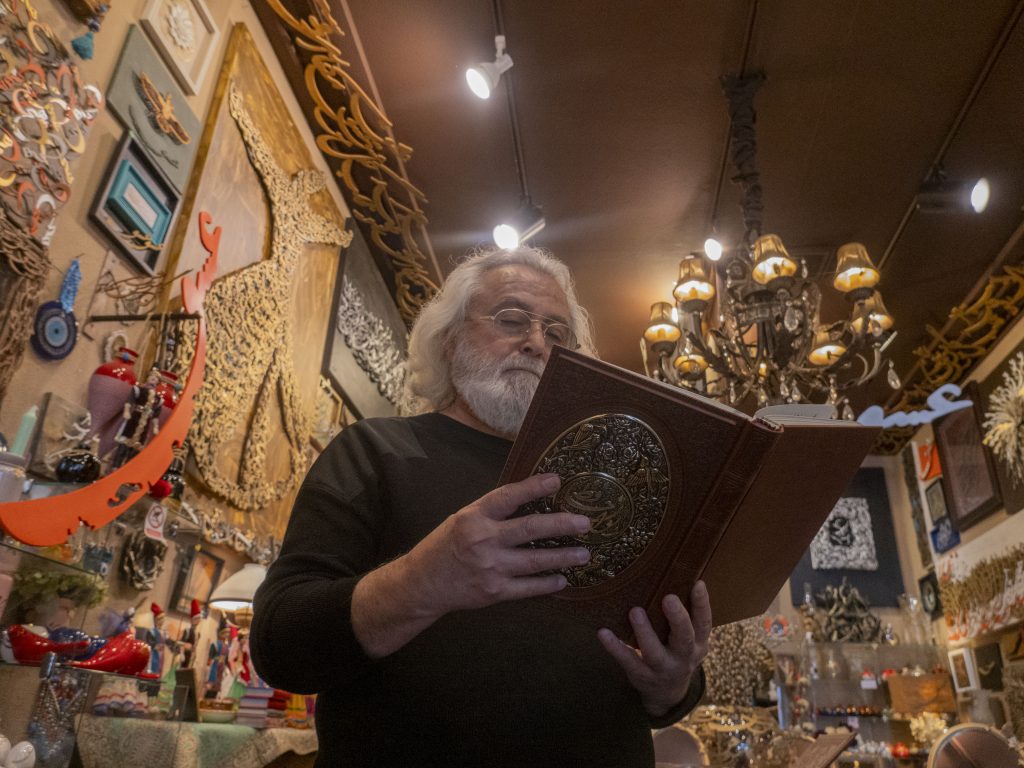
Bahman Bennett, the founder of Gallery Eshgh, reads through an ornately decorated book of Persian poetry. His gallery is a trove for Persian art and artifacts, all arranged around themes of love and inclusion. Photographed by Finn Martin/BruinLife.
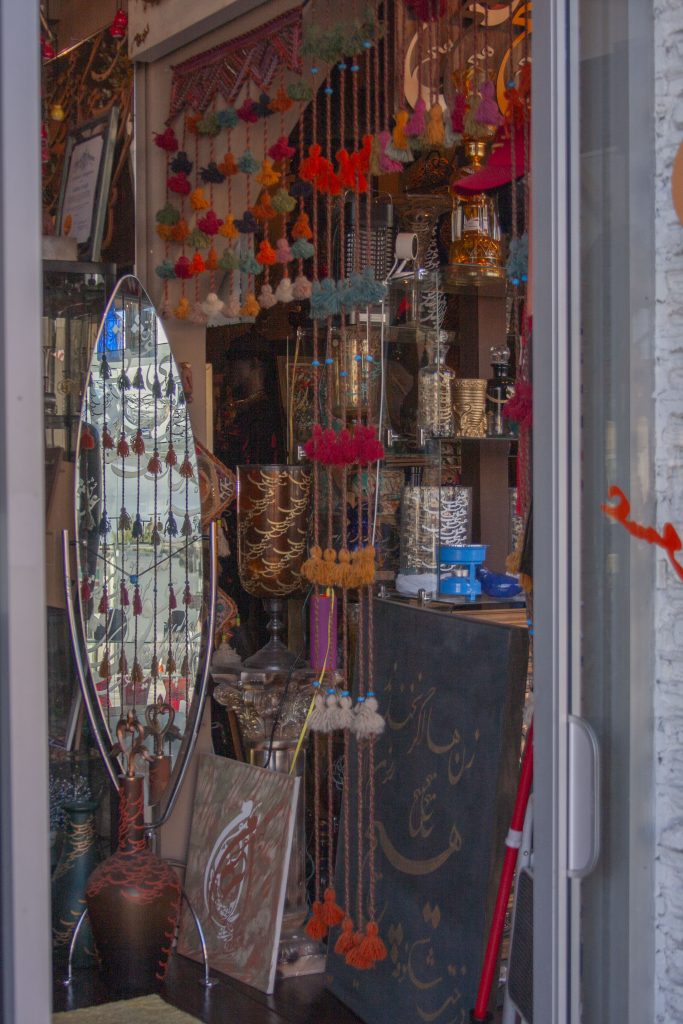
The Gallery Eshgh on Westwood Blvd houses multiple types of Persian art. The gallery art utilizes different styles and mediums for a large variety of work. Photographed by Emily Chandler/BruinLife.
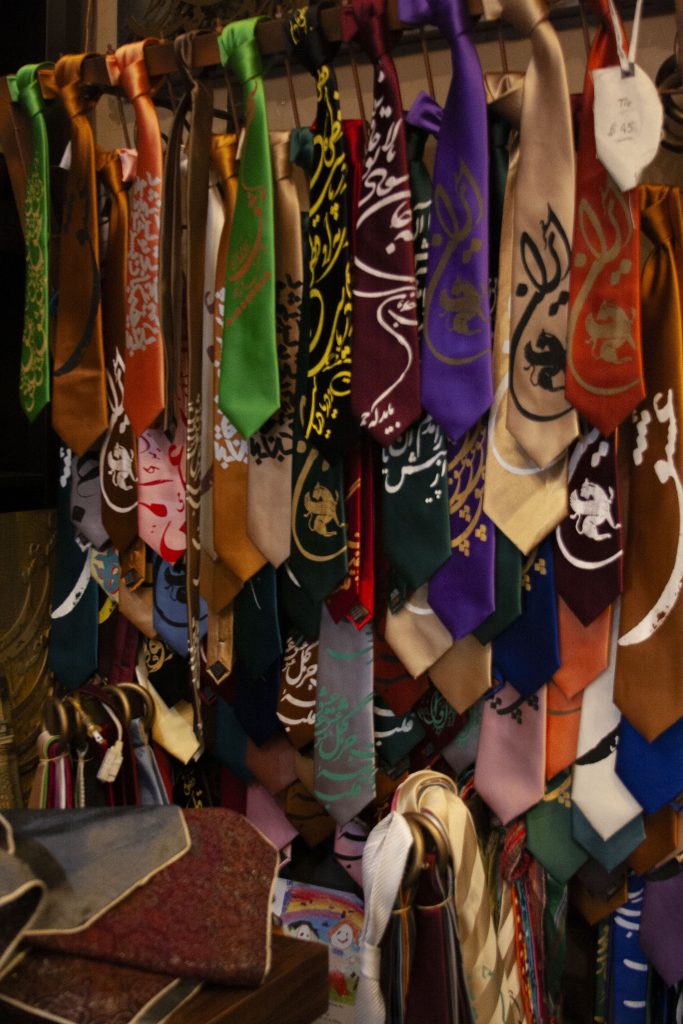
Walking into Gallery Eshgh on Westwood Blvd, visitors are greeted by vibrant colors and handcrafted art. From wood crafts to ceramic bowls, the gallery holds a beautiful variety of Persian art. Photographed by Emily Chandler/BruinLife. Photo credit: Emily Chandler
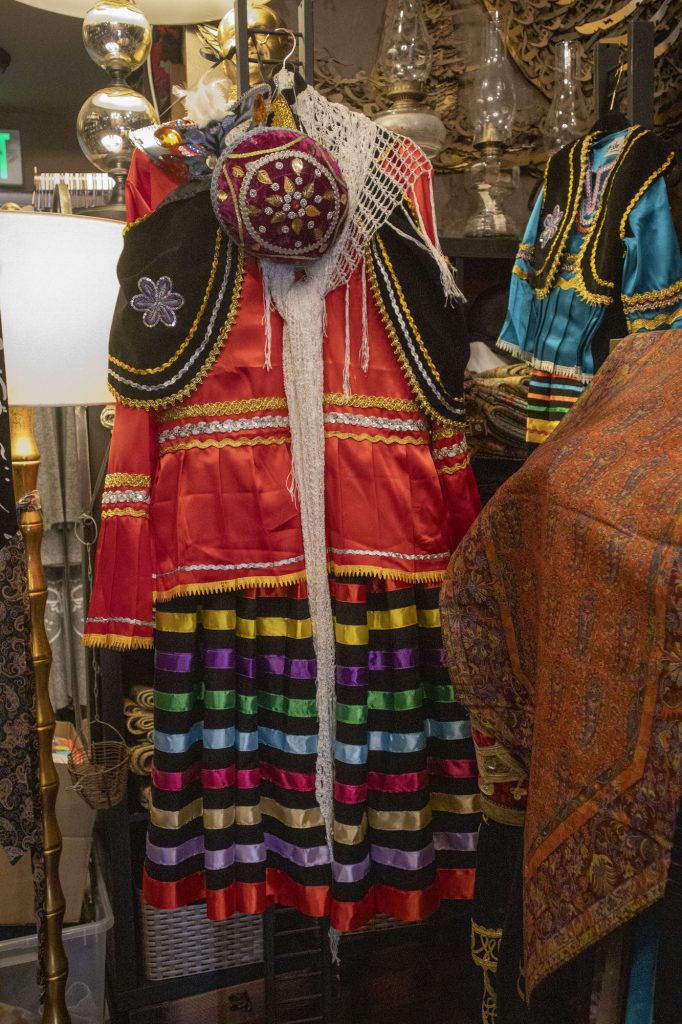
Even in the most hidden corners of Gallery Eshgh one can find fine, vibrant dresses and patterned, traditional rugs. The gallery displays a variety of items, from clothing to ceramics. Photographed by Juan Perez/BruinLife.
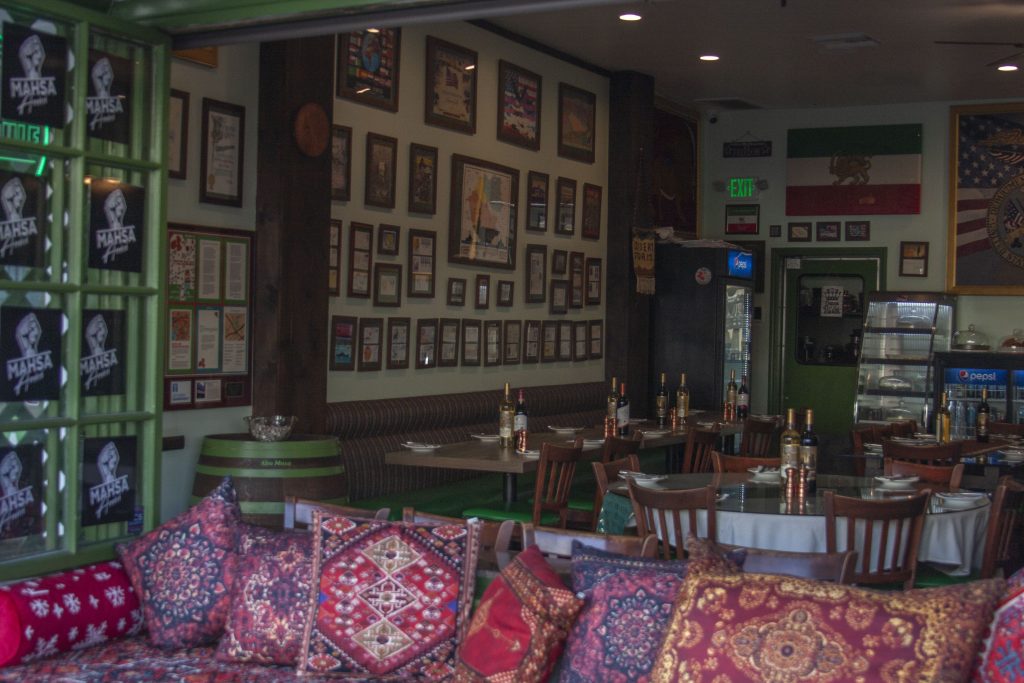
The bright colors of the Persian Gulf Museum Restaurant invite customers inside. They museum encourages visitors to enjoy their flavor rich authentic Persian dishes. Photographed by Emily Chandler/BruinLife.
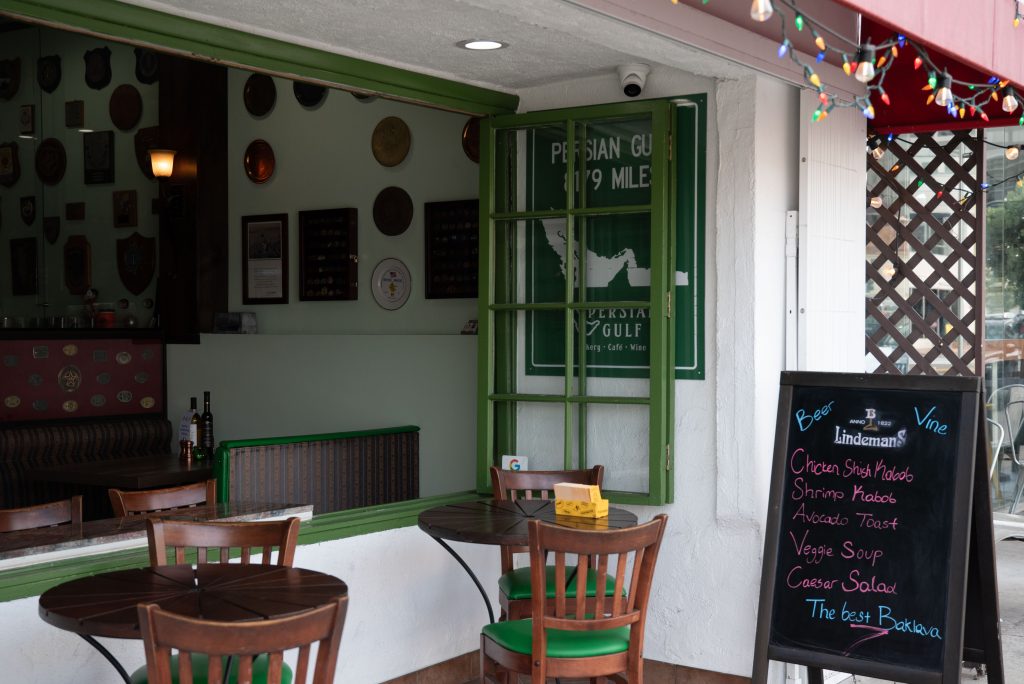
Sitting indoors at the Persian Gulf restaurant, you will find yourself surrounded by memorabilia and decor from the Iraq War. The restaurant offers meals from 9am to 10pm. Photographed by Akshansh Khrodia/BruinLife.
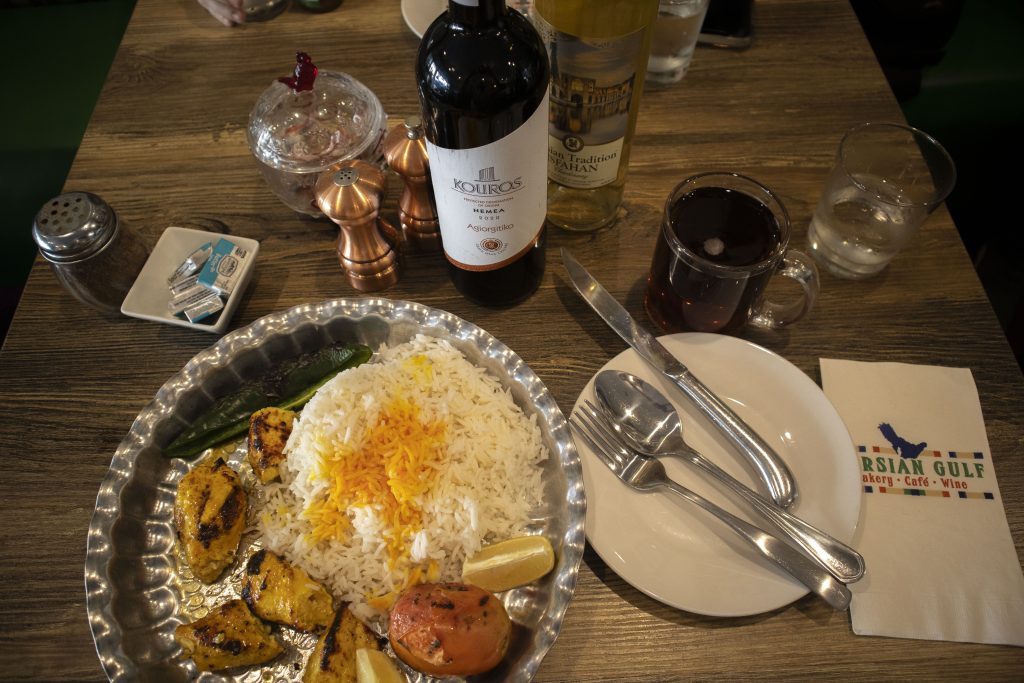
Feeling hungry on your journey to the Persian Square? At at the Persian Gulf restaurant, customers are greeted by a delicacies like a warm plate of chicken shish kabob. The restaurant offers a menu full of signature regional dishes. Photographed by Juan Perez/BruinLife.
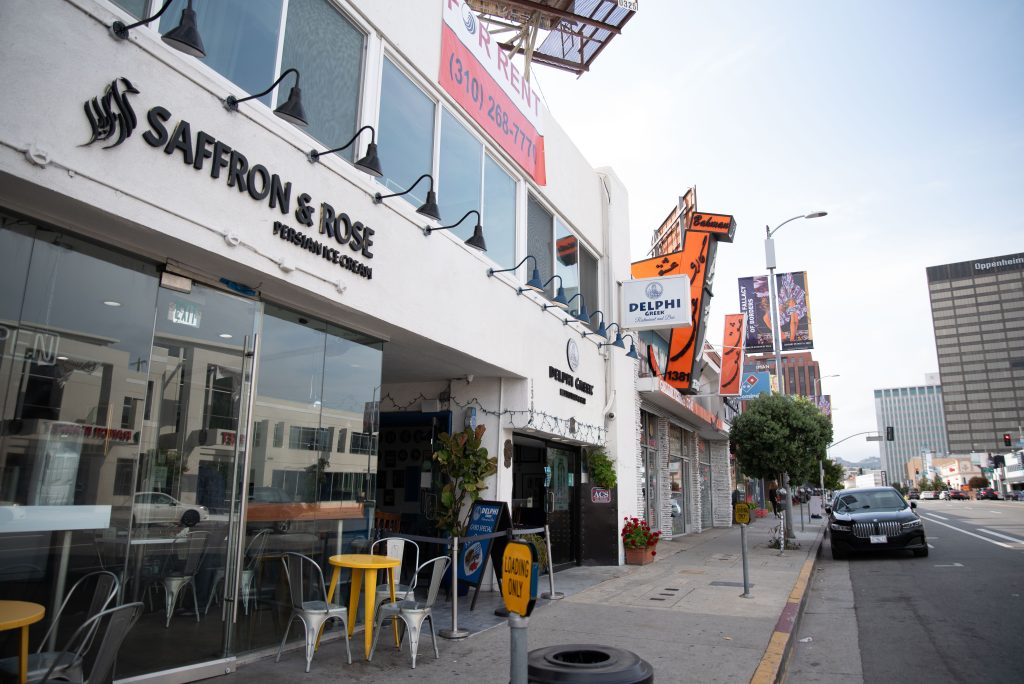
Saffron and Rose offers both indoor and outdoor seating to their customers. The shop has served Persian ice cream to the Persian Square since its 1974 founding. Photographed by Akshansh Khrodia/BruinLife.
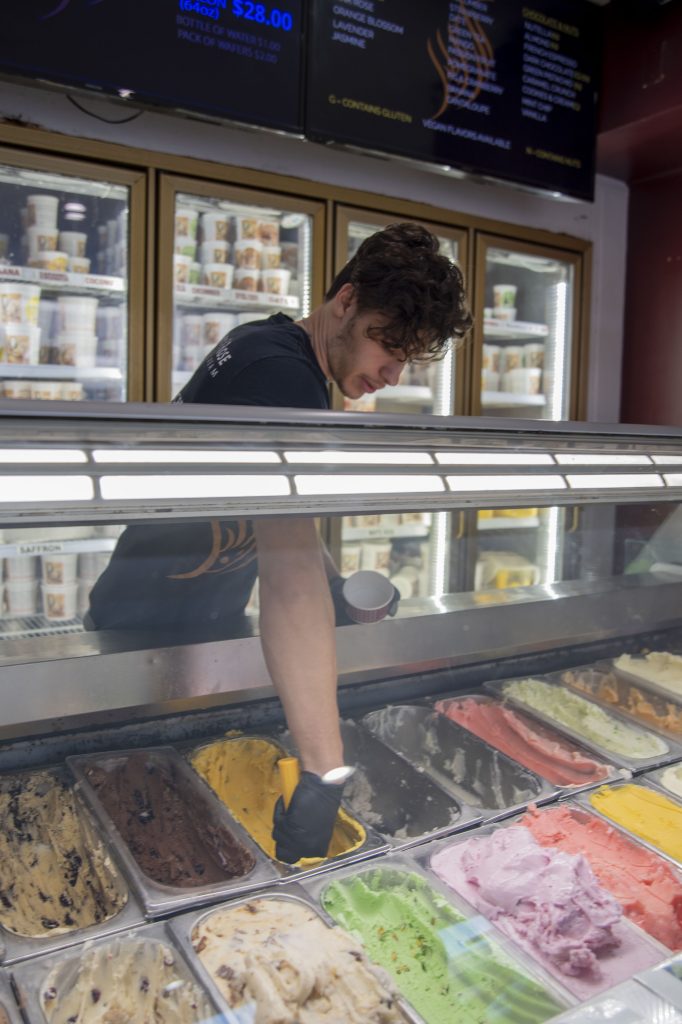
An employee at Saffron and Rose scoops out a ball of the store's homemade Saffron Pistachio ice cream, made with natural ingredients. Saffron and Rose has always been a family business. Photographed by Julia Gu/BruinLife
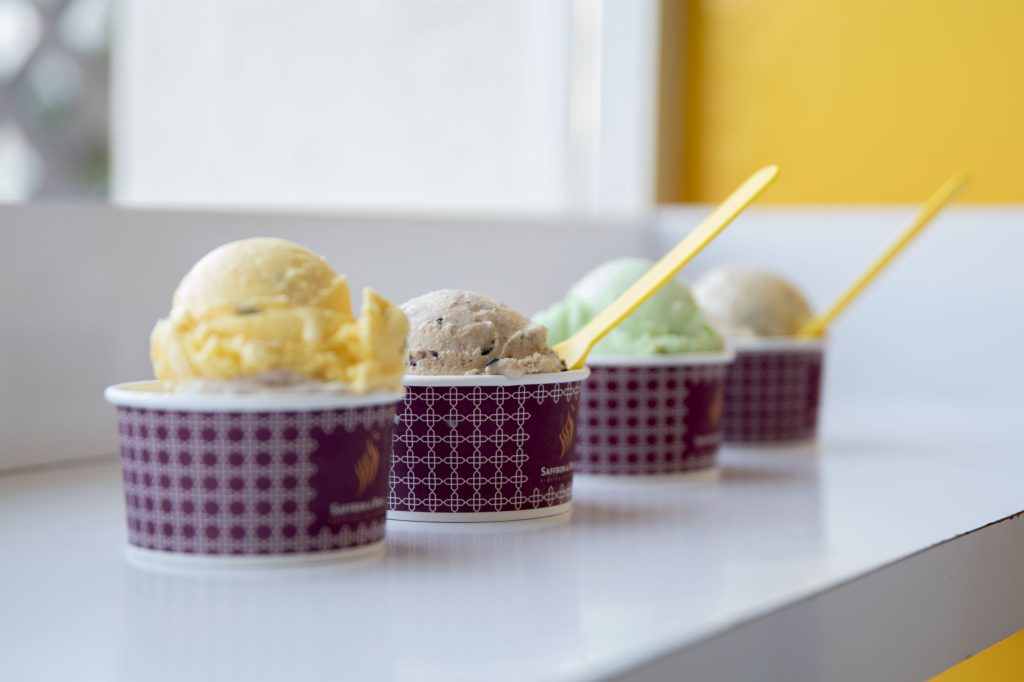
Saffron and Rose offers a global show of flavors for the curious, ice cream enthusiast. They are known for their unique Persian ice cream flavors that are rarely found elsewhere. Photographed by Julia Gu/BruinLife.
